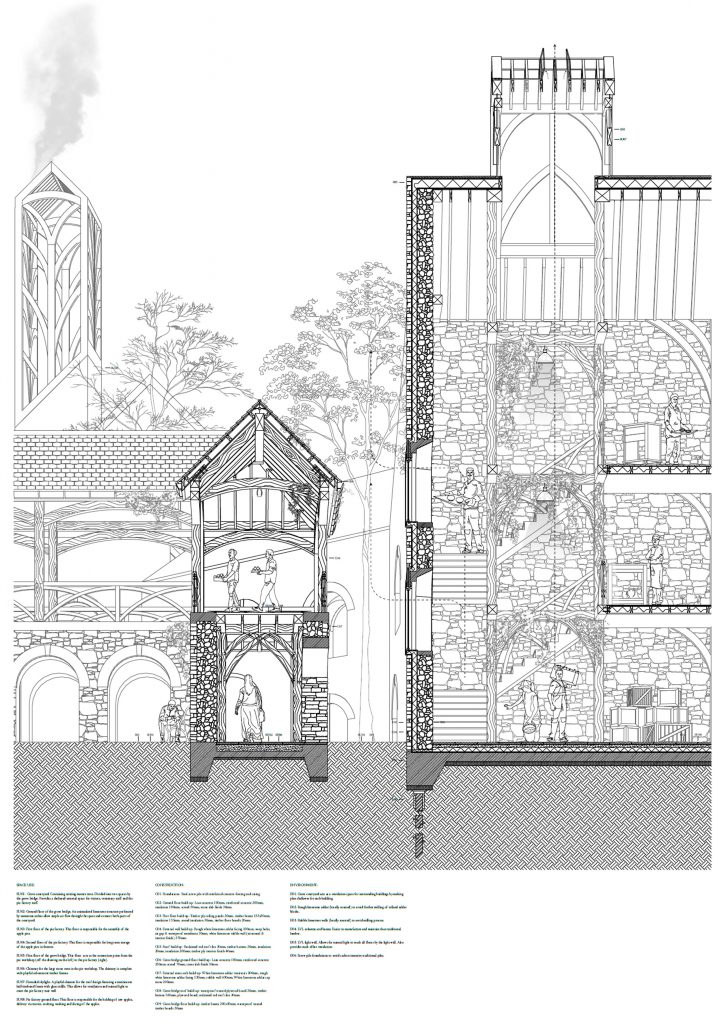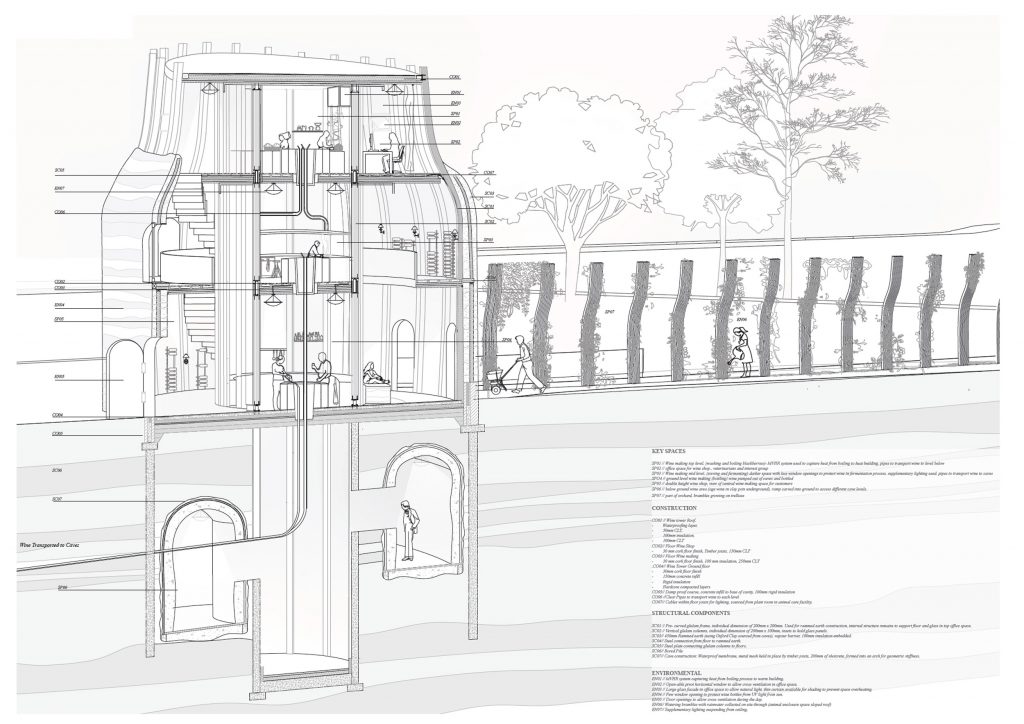
SUPPORTING MODULE
CONSTRUCTION TECHNOLOGY
AA2SCA - Integration
The ongoing climate emergency places added emphasis on designers to make not just informed decisions, but to ask the right questions and engage in debate using a common language when attempting to deliver zero carbon. In the final construction technology module before graduation, students consolidate their learning on aspects such as embodied energy, climate resilience, building conservation, retrofit, etc. whilst implementing this learning inductively through their studio projects – hence the module title emphasising such ‘integration’. The responsibility of future architects in achieving RIBA and LETI 2030 targets lies not in specification alone, but understanding the implication of decisions early on in projects and designing with inhabitation in mind (not just by humans, but other forms of life). We discuss the wider implications of merely hiding away services in a raised floor or false ceiling instead of drawing more attention to their use. Strategic moves are reinforced at the smaller scale, for example encouraging disassembly and repurposing through appropriate detailing. On this module we learn that there is no idealism; for example CLT is wonderful in many ways, but not appropriate for everything in construction. Likewise the perfect geometry derived algorithmically to transfer loads to the ground in the most efficient way possible will not necessarily provide the perfect habitat for hedgehogs. In essence the module encourages attaining a wider understanding of architectural technology (quantitative and qualitative), emphasising the responsibilities we have as designers whilst appreciating the limits of our knowledge.
Module Convenor: John Harding.
Guests External: Sabine Hogenhout (KLH Sustainability), Andy Hutton (CB|BE), Peter John Corbett (Corbett-Tasker), Will Howard (dRMM).
Guests Internal: Oliver Froome-Lewis, Carolina Vasilikou, Sayan Skandarajah, Mike Kane.
The ongoing climate emergency places added emphasis on designers to make not just informed decisions, but to ask the right questions and engage in debate using a common language when attempting to deliver zero carbon. In the final construction technology module before graduation, students consolidate their learning on aspects such as embodied energy, climate resilience, building conservation, retrofit, etc. whilst implementing this learning inductively through their studio projects – hence the module title emphasising such ‘integration’. The responsibility of future architects in achieving RIBA and LETI 2030 targets lies not in specification alone, but understanding the implication of decisions early on in projects and designing with inhabitation in mind (not just by humans, but other forms of life). We discuss the wider implications of merely hiding away services in a raised floor or false ceiling instead of drawing more attention to their use. Strategic moves are reinforced at the smaller scale, for example encouraging disassembly and repurposing through appropriate detailing. On this module we learn that there is no idealism; for example CLT is wonderful in many ways, but not appropriate for everything in construction. Likewise the perfect geometry derived algorithmically to transfer loads to the ground in the most efficient way possible will not necessarily provide the perfect habitat for hedgehogs. In essence the module encourages attaining a wider understanding of architectural technology (quantitative and qualitative), emphasising the responsibilities we have as designers whilst appreciating the limits of our knowledge.
Module Convenor: John Harding.
Guests External: Sabine Hogenhout (KLH Sustainability), Andy Hutton (CB|BE), Peter John Corbett (Corbett-Tasker), Will Howard (dRMM).
Guests Internal: Oliver Froome-Lewis, Carolina Vasilikou, Sayan Skandarajah, Mike Kane.










